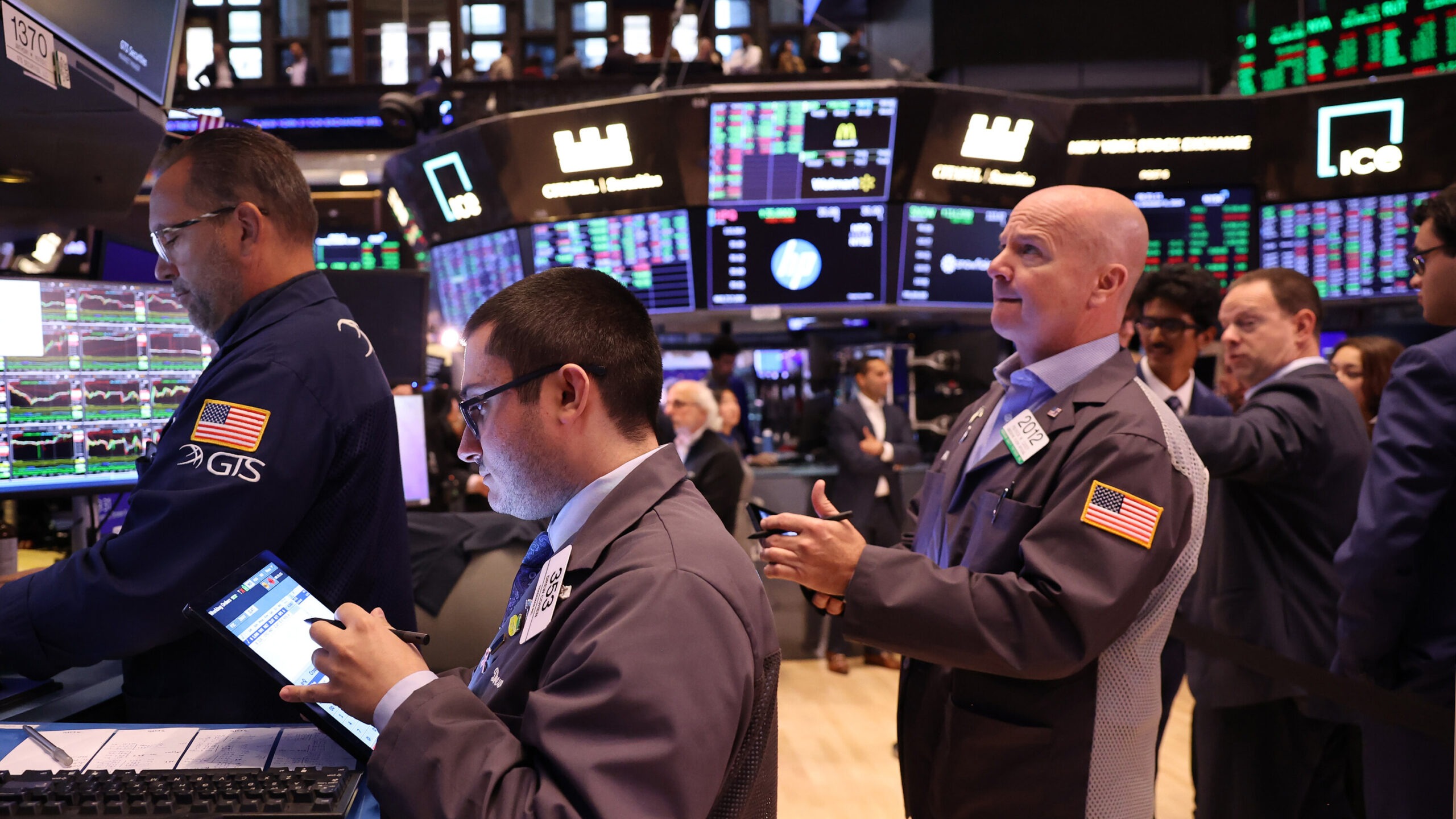Investing when stocks are volatile can feel like sailing through a tempest, but with the right strategies, you can weather the ups and downs to build wealth over time.
As markets gyrate—driven by economic uncertainty, policy shifts, and global events—experts and financial advisors offer practical advice: diversify your portfolio, focus on long-term goals, and seize opportunities in the dips.
Whether you’re a seasoned investor or a beginner, understanding how to adapt during turbulent times is key to minimizing risk and maximizing returns. This article explores proven tactics, real-world insights, and expert tips to help you invest confidently when the stock market feels like a rollercoaster.
The volatility gripping markets as of March 19, 2025, has investors on edge. The S&P 500 has swung wildly this month, dropping 10% from its February peak amid Trump’s tariff threats and Federal Reserve signals of slower rate cuts, only to rebound slightly after mixed economic data. Reports of Tesla’s 6.5% plunge and a tech selloff dragging the Nasdaq down 3.2% on March 18 underscore the unpredictability. Against this backdrop, outlets like CNN and the New York Times have tapped financial gurus to guide readers through the chaos, offering strategies that balance caution with opportunity.
Understanding the Volatility Landscape
Volatility isn’t new—it’s the market’s natural rhythm, amplified by today’s rapid news cycles and interconnected economies. CNN cites JPMorgan’s estimate of a 40% recession risk in 2025, fueled by tariffs and consumer spending dips, as a key driver of recent swings. The VIX, Wall Street’s “fear gauge,” spiked to 25 this week, per NBC News, signaling heightened uncertainty. Yet, experts like Treasury Secretary Scott Bessent, speaking on Fox Business, argue corrections are “healthy,” preventing euphoric bubbles that crash harder.
The New York Times points to external triggers: Trump’s tariff rhetoric, Fed Chair Jerome Powell’s hawkish stance, and geopolitical tensions like Russia-Ukraine strikes. These factors create a perfect storm, but they also frame volatility as a chance to reassess. “Markets hate uncertainty, but investors who stay calm can thrive,” says Liz Young of SoFi, quoted by Reuters. Understanding this context—why stocks are volatile—lays the groundwork for smart moves.
Diversify to Diffuse Risk
One golden rule rings out across advice columns: diversify. Spreading investments across asset classes—stocks, bonds, real estate, and even cash—cushions against sharp drops. The New York Times highlights how bonds, often overlooked in bull markets, regain appeal when stocks falter; the 10-year Treasury yield hit 4.5% this week, per NBC News, offering a safe haven. Financial planner Douglas Boneparth told CNN, “Diversification is your insurance policy—don’t put all your eggs in Tesla’s basket.”
Sector diversity matters too. While tech giants like Nvidia and Apple slumped, energy and financial stocks held firmer, Fox News reports. Exchange-traded funds (ETFs) tracking broad indices like the S&P 500 or global markets provide an easy diversification hack, says Fidelity’s Jurrien Timmer on CNBC. For the risk-averse, gold—up 15% this year, per Reuters—offers a hedge against inflation and chaos, a tip echoed on X by savvy investors.
How to Invest When Stocks Are Volatile: Practical Steps
The subheading mirrors the article’s core: how to invest when stocks are volatile, with actionable steps to guide you. First, stick to your long-term plan. “Volatility is noise if you’re in it for decades,” Vanguard’s Maria Bruno told NBC News. Panic-selling locks in losses; the S&P 500’s 30-year average annual return of 10% proves time smooths out bumps. Dollar-cost averaging—investing a fixed amount regularly—further mitigates risk, buying more shares when prices dip, a strategy lauded by the New York Times.
Second, hunt for bargains. Dips expose undervalued stocks—think quality companies with strong balance sheets trading below their norm. Warren Buffett’s “be greedy when others are fearful” mantra, cited by Fox News, resonates as Tesla’s drop tempts contrarians. CNN warns, though: research fundamentals, not just headlines. Tools like price-to-earnings ratios or dividend yields, available on platforms like Yahoo Finance, help spot gems amid the rubble.
Keep Cash on Hand
Liquidity is your lifeline in volatile markets. Holding cash—5-10% of your portfolio, per Fidelity’s advice on CNBC—lets you pounce on opportunities or cover emergencies without selling low. “Cash is king when fear rules,” says Liz Ann Sonders of Charles Schwab, quoted by Reuters. The New York Times notes that high-yield savings accounts, now offering 4-5% interest, make cash a productive asset, not just a cushion.
This strategy paid off for investors during the March 18 tech rout. Those with dry powder snapped up beaten-down shares as the Nasdaq rebounded 1.5% by midday March 19, per NBC News. Flexibility is key—too much cash drags returns, but too little leaves you exposed. Balance depends on your risk tolerance and timeline, a point hammered home by financial planners across outlets.
Avoid Emotional Traps
Volatility tests your nerve, and emotions can sabotage smart investing. The BBC reports that retail investors often sell at bottoms and buy at peaks—FOMO and fear in action. “The worst thing you can do is check your portfolio every hour,” says behavioral finance expert Meir Statman on CNN. Setting clear goals—retirement, a home—anchors you, reducing knee-jerk reactions to daily swings.
Fox News highlights a mental shift: view downturns as sales, not crises. When the Dow dropped 1.2% on March 18, seasoned investors saw a buying window, not a collapse. Apps like Robinhood now offer “circuit breakers” to pause trading during panics, a tool the New York Times says curbs impulsive moves. Discipline, not despair, separates winners from losers in choppy waters.
Lean on Experts—or Go It Alone?
Professional advice shines in volatile times, but it’s not for everyone. The New York Times notes a surge in robo-advisor use—Betterment and Wealthfront saw 20% more sign-ups this month—offering low-cost, algorithm-driven portfolios. Human advisors, though pricier, tailor plans; a Charles Schwab survey, cited by Reuters, found 60% of clients with advisors stayed calm during recent dips versus 40% of DIY investors.
Self-directed investors thrive with research. Platforms like Morningstar and Bloomberg, praised by CNBC, provide data to vet stocks or funds. X buzzes with tips—some gold, some noise—but cross-checking with reputable sources like the Wall Street Journal filters the chatter. Whether you hire help or fly solo, knowledge is your edge, a theme echoed across media.
Bonds, Dividends, and Defensive Plays
When stocks wobble, bonds and dividend payers offer ballast. The New York Times touts Treasury bonds as a “shock absorber,” with yields now competitive after Fed tightening. Corporate bonds from blue-chip firms like Microsoft, rated AAA, blend safety and income, per Reuters. Dividend stocks—think Coca-Cola or Johnson & Johnson, up 3-4% annually—provide cash flow amid chaos, a tactic Fox News calls “defense with a paycheck.”
Defensive sectors like utilities and healthcare, less tied to economic cycles, also shine. The Wall Street Journal notes their resilience as consumer staples held steady during the March selloff. ETFs like the Utilities Select Sector SPDR (XLU) simplify access, a tip from CNBC’s Jim Rickards. These assets don’t dodge volatility entirely but blunt its sting, ideal for jittery portfolios.
The Long Game: Patience Pays
Volatility tempts short-term bets, but history favors patience. The New York Times cites the 2008 crash—stocks tanked 37%, yet those who held recovered by 2012, doubling their money by 2020. “Time in the market beats timing the market,” says Vanguard’s Bruno on NBC News. Compounding works magic over decades, turning today’s dips into tomorrow’s gains.
Recent turbulence reinforces this. The S&P 500’s 10% correction, per CNN, mirrors past cycles—1987, 2000, 2020—all followed by rebounds. Fox News quotes Bessent: “Corrections are normal—what’s not is straight up.” For young investors, volatility is a gift; for retirees, it’s a test of allocation. Either way, staying the course trumps chasing the storm.
Mind the Risks: Know Your Limits
No strategy is foolproof. High volatility can signal deeper trouble—recessions or policy missteps—and overbuying dips risks catching a falling knife. The BBC warns of “value traps”—stocks that look cheap but keep sliding, like some tech names this month. Leverage, like margin loans, amplifies losses, a pitfall CNBC flags after March 18’s margin calls.
Risk tolerance varies. A 30-year-old can ride out a 20% drop; a 70-year-old might not. The New York Times advises stress-testing your portfolio—could you sleep if it fell 30%? Adjust accordingly, blending growth with stability. Volatility isn’t the enemy; unpreparedness is.
Your Move: Investing With Confidence
Volatility is here to stay, but it’s not a stop sign—it’s a speed bump. Diversify, stay liquid, buy smart, and tune out noise. The New York Times sums it up: “Markets reward the patient, not the panicked.” As stocks lurch into spring 2025, your playbook matters more than the headlines. Whether it’s Tesla’s tumble or tariff fears, opportunity hides in the chaos for those who plan ahead.
This article draws from insights by BBC, CNN, NBC News, Fox News, the New York Times, Reuters, CNBC, The Wall Street Journal, and other outlets, blending expert advice with real-time market context.
Focus Keywords: investing volatile stocks, stock market volatility, how to invest 2025, diversification strategies, long-term investing, stock market dips, financial planning volatility, safe investments 2025
















